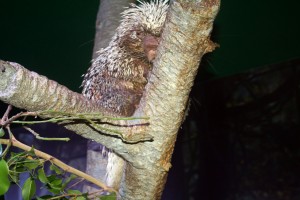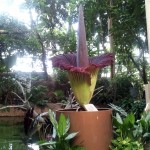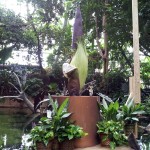
Porcupine Baby!
From brightly colored macaws to lounging lizards, more than 200 animal species have made a home in the Rainforest Pyramid at Moody Gardens. And as of yesterday, Moody Gardens has the second prehensile tailed porcupine born onsite since the Rainforest Pyramid’s grand re-opening.
The reddish orange baby was born on the same exact date as its older sibling last year. A quill was sent for DNA testing to determine the gender and after, a name will be chosen. Weighing at 480 grams, the newborn is on exhibit inside the nocturnal gallery of the Rainforest Pyramid.
Although the newborn looks as soft as a puppy, the quills will harden within a few weeks. Sharing an exhibit with the mother, Bobby-Sue, the new baby is climbing the trees and exploring the area. Bobby-Sue and the father, Bono, have been together since 2007 and this is their second baby since their introduction into the newly enhanced pyramid.
Prehensile Tailed porcupines are found in the wild in Central and South America. These vegetarian, tree-dwelling rodents usually weigh between four and eleven pounds and their tails are almost as long as their whole body. They are covered in short, thick spines and their body color runs from yellowish to orange to brown. One of their defining characteristics is a small head with a round, bulbous nose which is covered by short and fine hair. They also have whiskers on the face and feet that help in maneuvering around at night.This species is named for their unique tail, which is used a fifth hand to help hold onto branches as they climb throughout the canopy. The last 1/3 of the tail is spineless, enabling the animal to get a better grip on the tree branches. The front and hind feet are modified for grasping, which makes them excellent climbers. One thing they cannot do however is jump.Porcupines have a built-in defense. While most of their body is covered in sharp quills, they are incapable of throwing them, which is a common misconception. These quills will detach easily when touched and imbed into the skin of an enemy. They have also been known to hit and bite their attackers and curl up into a ball when caught. When provoked, they will stomp their hind feet, sit on their haunches, shake their quills and emit deep growls and high pitched cries. These defenses are so formidable that Prehensile Tailed porcupines have the luxury of a longer lifespan and slower reproductive rate than most rodents.







